29 - 30 JANUARY 1998 - FURTHER DEVELOPMENT OF THE OCCLUSION
by FMI
|
30 January 1998/11.25 UTC - NOAA CH4 image
|
30 January 1998/15.54 UTC - NOAA CH4 image
|
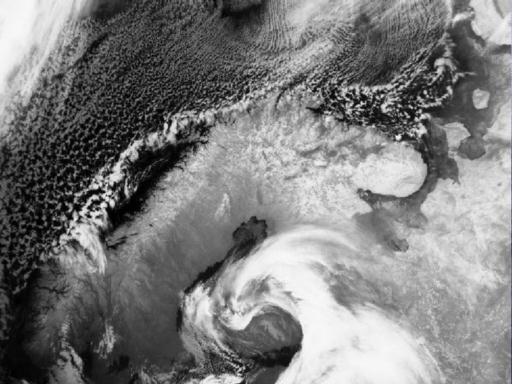
|
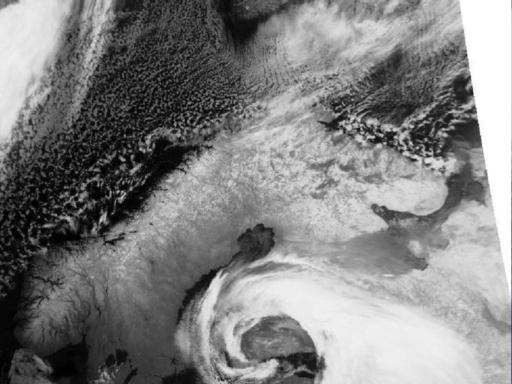
|
|
30 January 1998/06.00 UTC - Meteosat IR image; yellow: height contours 500 hPa 06.00 UTC, green: height contours 500 hPa 12.00 UTC, blue: height
contours 500 hPa 18.00 UTC
|
30 January 1998/06.00 UTC - Meteosat IR image; yellow: height contours 1000 hPa 06.00 UTC, green: height contours 1000 hPa 12.00 UTC, blue: height
contours 1000 hPa 18.00 UTC
|
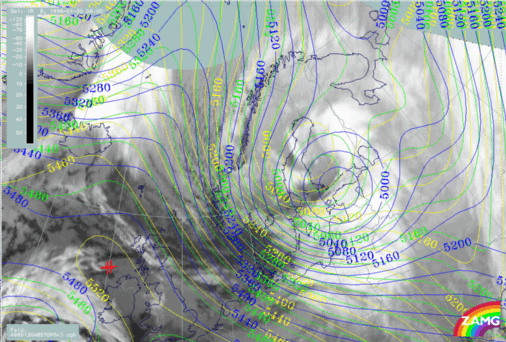
|
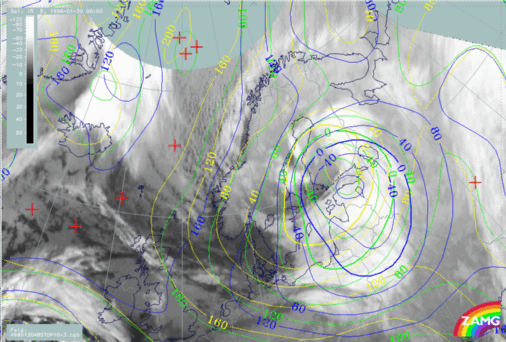
|
|
30 January 1998/06.00 UTC - Meteosat IR image; yellow: positive vorticity advection (PVA) 500 hPa 06.00 UTC, green: positive vorticity advection
(PVA) 500 hPa 12.00 UTC, blue: positive vorticity advection (PVA) 500 hPa 18.00 UTC
|
30 January 1998/06.00 UTC - Meteosat IR image; yellow: thermal front parameter (TFP) 500/850 hPa 06.00 UTC, green: thermal front parameter (TFP)#
500/850 hPa 12.00 UTC, blue: thermal front parameter (TFP) 500/850 hPa 18.00 UTC
|
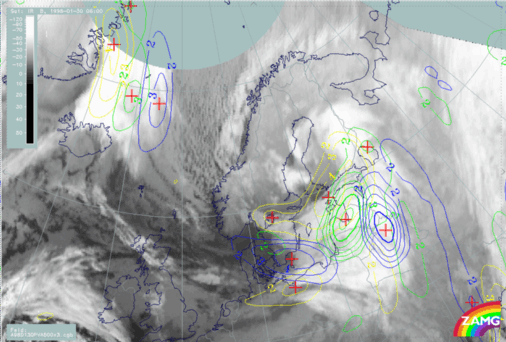
|
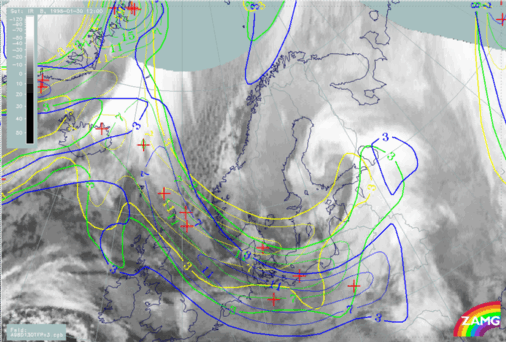
|
The TFP (right image) moves southward till 18 UTC with the Cold Front part entering Poland and the air mass boundary extending from the North Sea to south Denmark. The Occlusion part propagates to the south-east as well.


